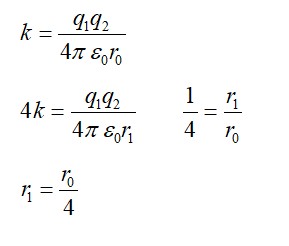13.5 A given coin has a mass of 3.0 g. Calculate the nuclear energy that would be required to separate all the neutrons and protons from each other. For simplicity assume that the coin is entirely made of atoms (of mass 62.92960 u).
13.5 A given coin has a mass of 3.0 g. Calculate the nuclear energy that would be required to separate all the neutrons and protons from each other. For simplicity assume that the coin is entirely made of atoms (of mass 62.92960 u).
-
1 Answer
-
13.5 Mass of the copper coin, m’ = 3.0 g
Atomic mass of , m = 62.92960 u
The total number of atoms in the coin, N = , where
= Avogadro’s number = 6.023 atoms / g
Mass number = 63 g
Therefore, N = = 2.868 atoms
has 29 protons and (63 – 29) 34 neutrons
Hence the mass defect of the nucleus Δm = 29 + 34 -
Mass of a proton, = 1.007825 u
Mass of a neutron, = 1.008665 u
Δm = 29 + 34 - 62.92960
Δm = 0.591935 u
Mass defect of all the atoms present in the coin, Δm = 0.
...more
Similar Questions for you
Q = [4 *4.0026 – 15.9994] *931.5 MeV
Q = 10.2 MeV
Taking an Exam? Selecting a College?
Get authentic answers from experts, students and alumni that you won't find anywhere else
Sign Up on ShikshaOn Shiksha, get access to
- 65k Colleges
- 1.2k Exams
- 682k Reviews
- 1800k Answers


